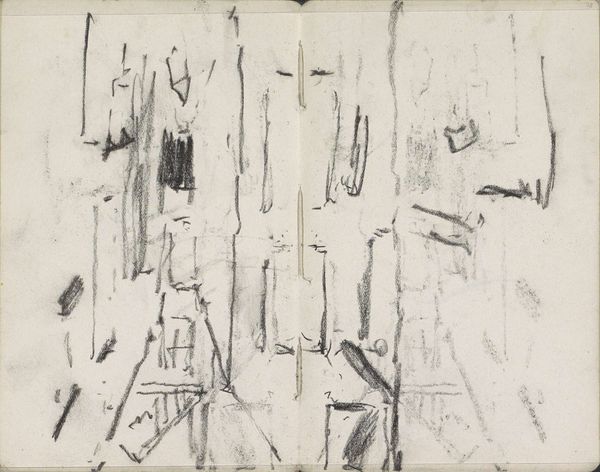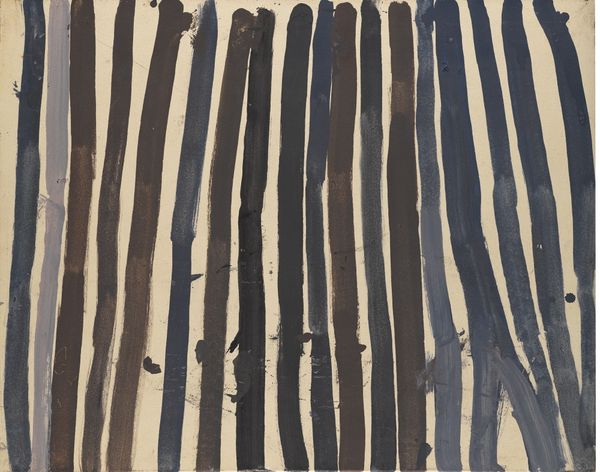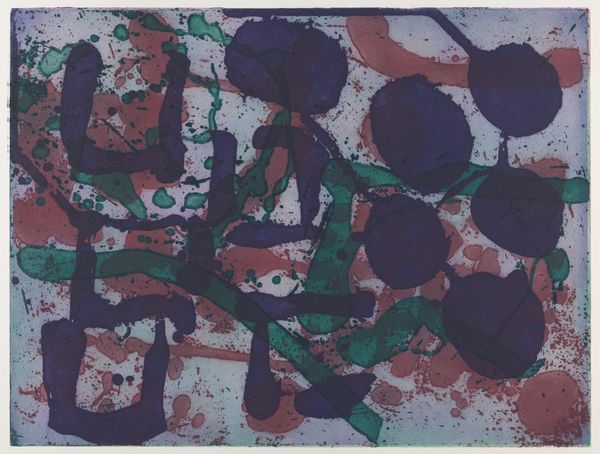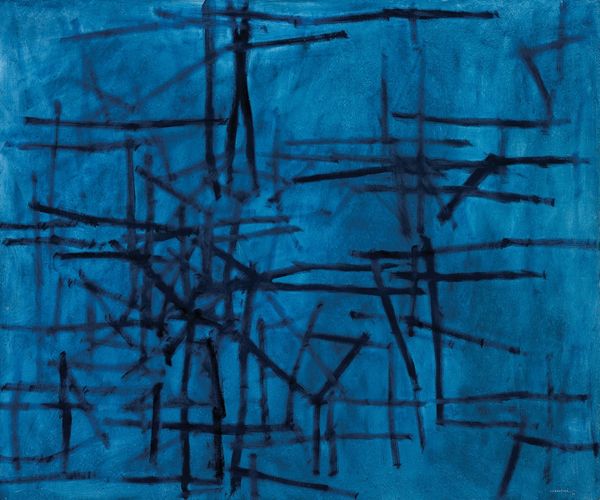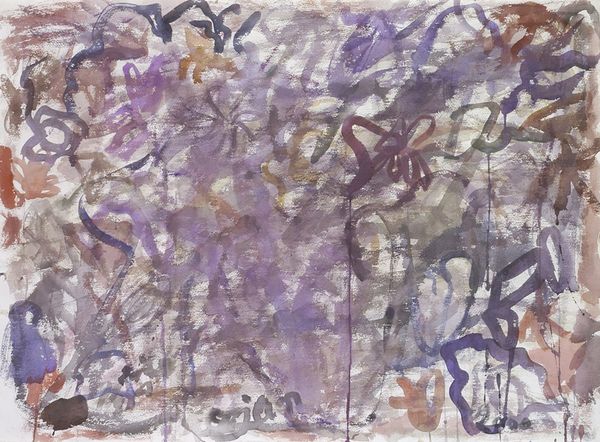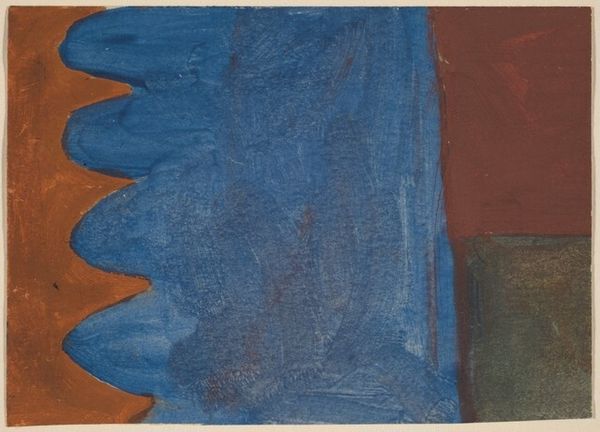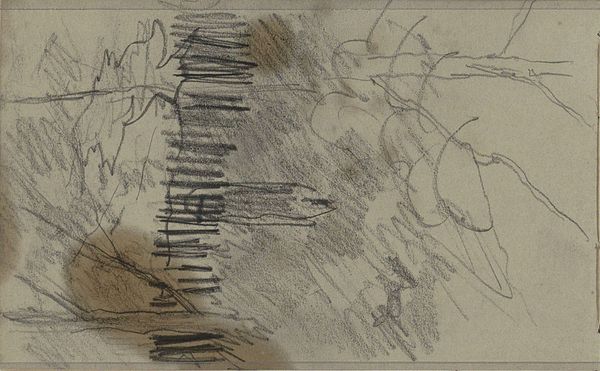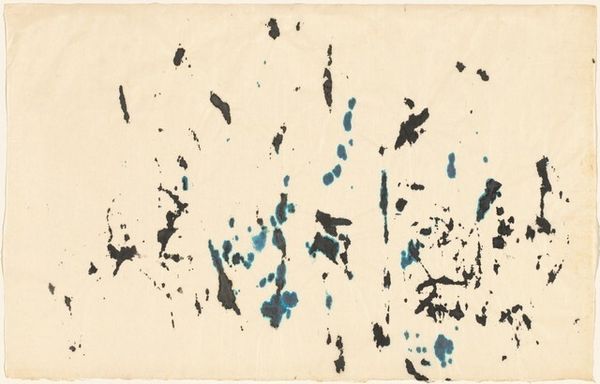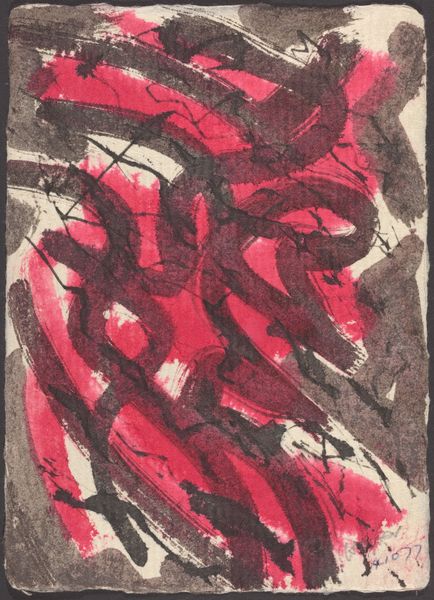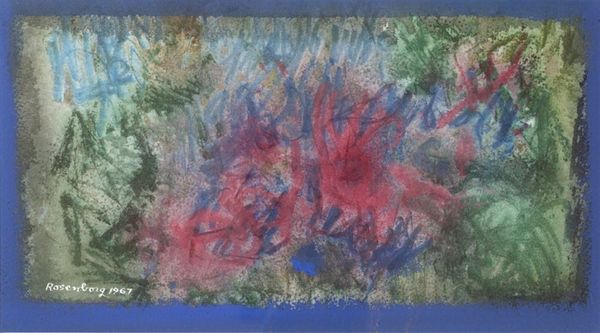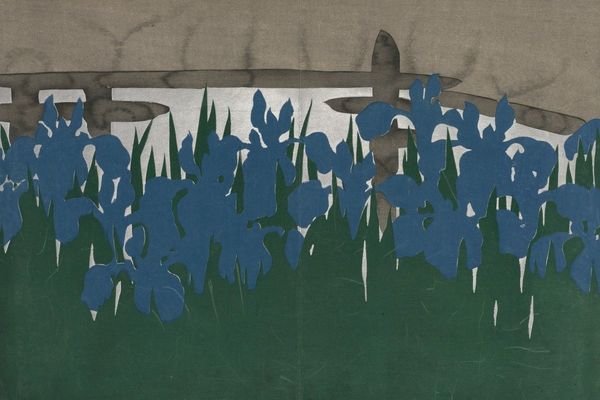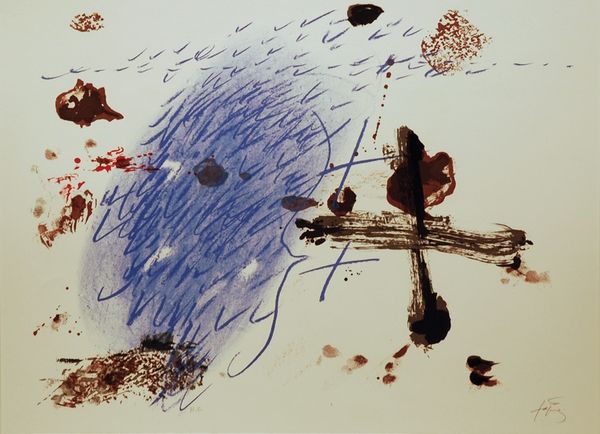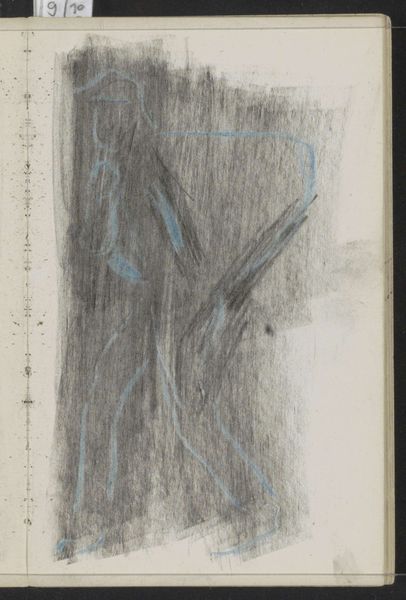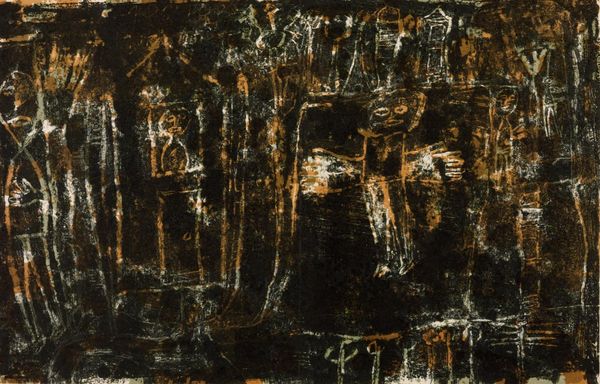
Dimensions: support: 750 x 975 mm
Copyright: © Trevor Bell | CC-BY-NC-ND 4.0 DEED, Photo: Tate
Editor: Here we have Trevor Bell’s painting, "Erosion with a Corner," from the Tate collection. It's a compelling composition, almost like the earth itself is being peeled away. What do you make of it? Curator: Considering the title, it evokes ideas of environmental degradation, particularly in a post-colonial context. The ‘corner’ could symbolize a site of exploitation, and the eroding lines might represent the lasting impact of extraction on indigenous lands and communities. How does that resonate with you? Editor: That connection to exploitation makes so much sense. I hadn't considered it in that light, but it definitely adds another layer to the work. Curator: Exactly! The artist is asking us to confront the power dynamics inherent in our relationship with the natural world. Editor: Thank you for expanding my perspective on the sociopolitical meanings of this work! Curator: It was my pleasure, seeing art through an activist lens is about acknowledging its role in societal critique.
Comments
tate 7 months ago
⋮
http://www.tate.org.uk/art/artworks/bell-erosion-with-a-corner-t13398
Join the conversation
Join millions of artists and users on Artera today and experience the ultimate creative platform.
tate 7 months ago
⋮
Erosion with a Corner 1989 is one of eight abstract works on paper in Tate’s collection that were created by the English artist Trevor Bell between 1988 and 2007 (Tate T13397–8, T13400–5). In it, blue structures made up of multiple lines repeat across a red wash background at a slanted angle. These are separated by slanted brown lines of varying lengths. In the bottom right-hand corner is a brownish-grey square section that features a series of thick grey-black lines, which overlap to produce a form reminiscent of a calligraphic character.
